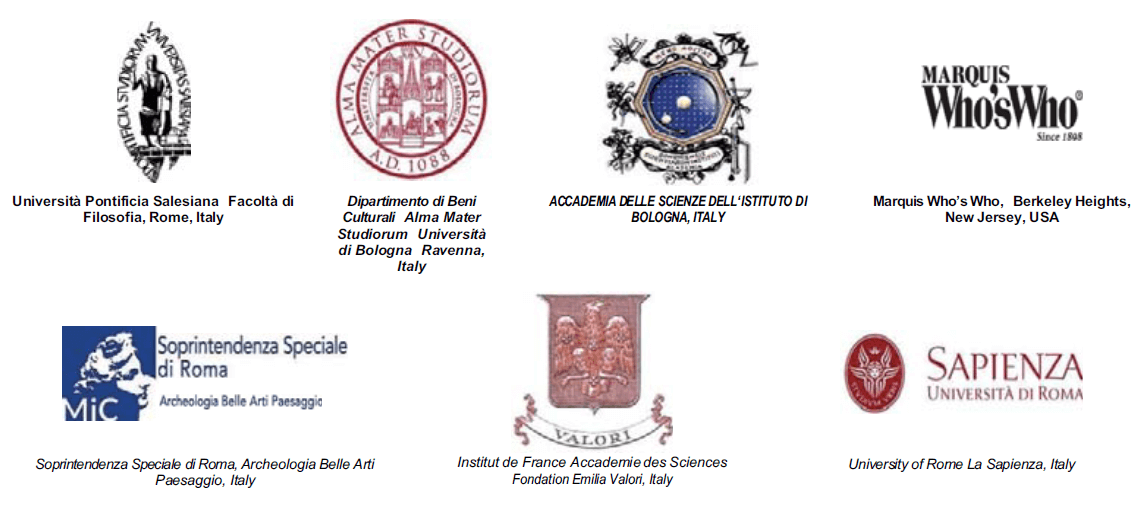Elimination of Xylophages from Wood through Microwave Treatment: Microstructural Experiments
DOI:
https://doi.org/10.6092/issn.1973-9494/7938Keywords:
microwave, structures in wood, xylophages, microstructureAbstract
Samples of chestnut wood taken from modern age structures in the Campania Region were subjected to chemical and physical analysis in order to examine the microstructural variations in the material as a result of exposure to microwaves with the aim of devitalising colonies of xylophages. Results showed that the use of microwaves does not lead to alterations in the structure of the wood, but does bring about variations in its hygroscopicity and permeability.References
Bisceglia, B., Guerriero, L.B., Avallone, E., Buonerba, A., Caliendo, E., Chiadini, F., Grassi, A., Incarnato, L., Scaglione, A. (2012) Microwave Treatment of Tuff-stones: structural analysis. In Proceedings of XIX RiNeM, pp. 633-636.
Chiadini, F., Diovisalvi, A., Fiumara, V., Scaglione A. (2016) Cantor Dielectric Resonators for Microwave Waveguide Applicators. Radio Science, 51:731-741.
Chiadini, F., Diovisalvi, A., Fiumara, V., Scaglione, A. (2014) A Cantor Multilayer Traveling Wave Applicator for Microwave Heating: numerical analysis and design. Journal of Applied Physics, 116: 214503.
Sun, T.S., Chen, L.J. (2017) Temperature Field of Asphalt Mixture Based on Microwave Heating. Journal of Microwave Power and Electromagnetic Energy, 51:59-70.
Meir, Y., Jerby, E. (2012) Thermite Powder Ignition by Localized Microwaves. Combustion and Flame, 159:2474-2479.
Payette, M., Work, T.T., Drouin, P., Koubaa, A. (2015) Efficacy of Microwave Irradiation for Phytosanitation of Wood Packing Materials. Industrial Crops and Products, 69:187-196.
Hoover, K., Uzunovic, A., Gething, B., Dale, A., Leung, K., Ostiguy, N., Janowiak, J.J. (2010) Lethal Temperature for Pinewood Nematode, Bursaphelenchus Xylophilus, in Infested Wood Using Microwave energy. Journal of nematology, 42:101-110.
Torgovnikov, G., Vinden, P. (2009) High-intensity Microwave Wood Modification for Increasing Permeability. Forest Products Journal, 59(4):84-92.
Torgovnikov, G., Vinden, P. (2009) Microwave Wood Modification Technology and its Applications. Forest Products Journal, 60(2).
Vongpradubchai, S., Rattanadecho, P. (2009) The Microwave Processing of Wood Using a Continuous Microwave Belt Drier. Chemical Engineering and Processing, 48:997-1003.
Fiengo, G., Guerriero, L. (2008) Atlante delle tecniche costruttive tradizionali. Napoli Terra di Lavoro (XVI –XIX), 2 vols., Naples: Arte Tipografica Editrice.
Shen, J., Igathinathane, C., Yu, M., Pothula, A.K. (2015) Biomass Pyrolysis and Combustion Integral and Differential Reaction Heats with Temperatures Using Thermogravimetric Analysis/Differential Scanning Calorimetry. Bioresource Technology, 185:89-98.
Franceschi, E., Cascone, I., Nole, D. (2008) Study of Artificially Degraded Woods Simulating Natural Ageing of Archeological Findings. Journal of Thermal Analysis and Calorimetry, 92:319-322.
Chen, Z., Hu, M., Zhu, X., Guo, D., Liu S., Hu Z., Xiao, B., Wang, J., Laghari, M. (2015) Characteristics and Kinetic Study on Pyrolysis of Five Lignocellulosic Biomasses via Thermogravimetric Analysis. Bioresource Technology, 192:441-450.
Bertone, A., Appolonia, L. (2001) Indagine spettroscopica FTIR dei legni del museo regionale di scienze naturali della Valle d’Aosta, Rev. Valdôtaine Hist. Nat. 55:175-192.
Akgül, M., Gümüscaya, E., Korkut, S. (2007) Crystalline Structure of Heat-treated Scots Pine and Uludaǧ Fir Wood. Wood Sci Technol, 41:281-289.
Ates, S., Hakan Akyildiz, M., Özdemir, H., Gümüscaya, E. (2010) Technological and Chemical Properties of Chestnut Wood after Heat Treatment. Romanian Biotechnological Letters, 1(1).
Downloads
Published
How to Cite
Issue
Section
License
Copyright (c) 2017 Cesare Crova, Francesco Chiadini, Luciano Di Maio, Luigi Guerriero, Luca Pescione
Copyrights and publishing rights of all the texts on this journal belong to the respective authors without restrictions. Authors grant the journal right of first publication.
This journal is licensed under a Creative Commons Attribution 4.0 International License (full legal code).
See also our Open Access Policy.






